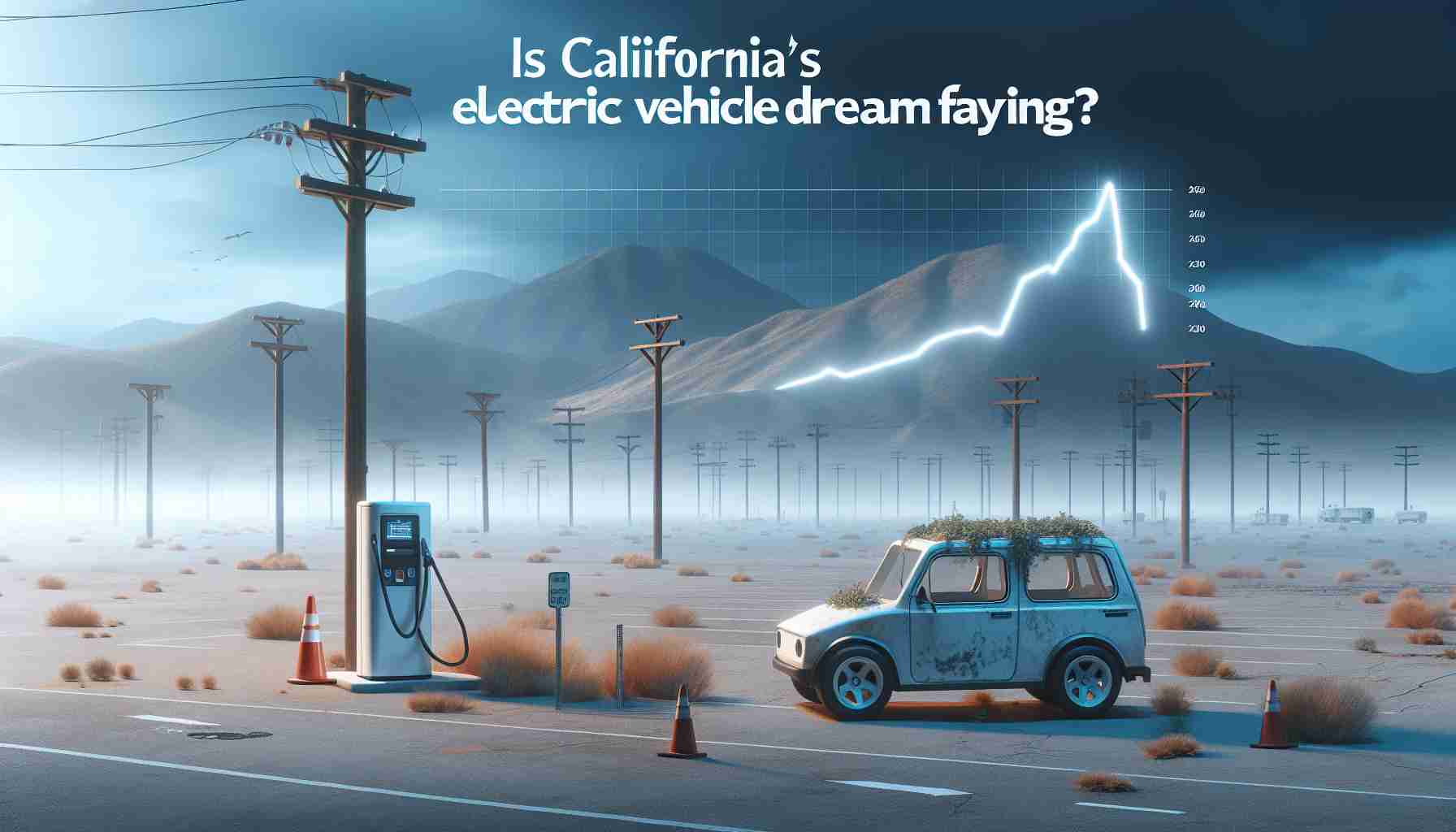- California’s electric vehicle sales growth has stagnated, with only a 1% increase in registrations in 2024.
- The state aims for 35% of new car sales to be electric by 2026, but compliance challenges loom for automakers.
- Automakers risk hefty fines, prompting potential shifts in sales strategies to meet state mandates.
- Major brands like Honda and Toyota are increasing hybrid sales, while Tesla has seen a decline in registrations.
- Despite the challenges, state agencies project a continued commitment to the transition to zero-emission vehicles.
- California’s innovation must match its ambitious zero-emission goals to regain leadership in the EV market.
In a surprising turn of events, California’s electric vehicle (EV) sales growth has hit a wall, raising urgent questions about the state’s ambitious zero-emission targets. Recent data reveals that in 2024, only 387,368 zero-emission vehicles were registered, a mere 1% increase from the previous year, despite the state’s mandate requiring 35% of new car sales to be EVs by 2026.
The situation is dire for automakers. With these numbers on the table, brands risk hefty fines of $20,000 per non-compliant vehicle sold. Industry experts suggest companies may resort to limiting gasoline vehicle sales to meet the mandated percentages, leaving Californians scrambling for alternatives. This could pave the way for a bizarre reality where internal combustion vehicles flood neighboring states while California’s EV hopes languish.
Meanwhile, traditional automakers are pulling back from EV investments, as consumer interest wanes. Honda and Toyota surge with a 32% rise in hybrid sales, capitalizing on the turmoil. Tesla, once the undisputed king of the EV landscape, is not immune—experiencing an 11.6% drop in new car registrations in California this past year.
Despite the setbacks, state agencies are standing firm, asserting that the transition to zero-emission vehicles is still on track. As domestic and international EV strategies shift, one central truth remains: California’s ability to innovate needs to match its lofty ambitions. Only time will tell if the Golden State can reclaim its place at the forefront of the electric vehicle revolution.
Takeaway: California’s electric vehicle dream is at a crossroads; manufacturers must adapt quickly or face severe penalties, while consumers face uncertain choices.
Is California’s Electric Vehicle Market at a Breaking Point?
Current Scenario of California’s Electric Vehicle Market
California’s electric vehicle (EV) landscape is encountering unprecedented challenges that could impact its ambitious zero-emission targets. In 2024, only 387,368 zero-emission vehicles were registered—this represents a mere 1% increase from the prior year. This stagnation occurs against the backdrop of a state mandate that requires 35% of new car sales to be EVs by 2026.
Implications for Automakers
The implications for automakers are significant. Companies face a $20,000 fine for each non-compliant vehicle, prompting many manufacturers to contemplate limiting gasoline vehicle sales to adhere to the mandated targets. As a result, there is a possibility of internal combustion engines flooding neighboring states, while California grapples with its stalled EV adoption.
Additionally, traditional automakers like Honda and Toyota are seeing a surge in hybrid sales—up 32%—as they pivot towards models that remain popular amidst changing consumer preferences. Tesla, despite its stronghold on the market, has not escaped the downturn, facing an 11.6% drop in new car registrations in California.
Key Insights on the EV Market
– Market Trends: The rise in hybrid vehicle popularity shows a critical pivot in consumer interests, moving from purely electric to versatile options.
– Regulatory Impact: Stricter regulations may push automakers to rethink their strategies and offerings in California.
– Technical Innovations: Future innovations in battery and charging technologies could play a vital role in reviving consumer interest and sales.
Future Outlook
State agencies claim the zero-emission vehicle transition remains on course, highlighting that California’s ability to innovate will be pivotal in reaching its electrification goals. With shifts in domestic and international EV strategies, California must bolster its innovation efforts to rebound from this stagnation.
Related Questions
1. What are the main reasons behind the decline in EV sales in California?
The decline in EV sales can be attributed to factors such as heightened prices, increased competition from hybrids, consumer hesitation about the practicality of EVs, and a potential lack of a robust charging infrastructure.
2. How might automakers adapt to California’s stringent regulations?
Automakers may adapt by increasing investments in hybrid technology, enhancing marketing for EVs, exploring partnerships for expanding charging networks, and innovating to reduce costs of EV production.
3. What does the future hold for hybrid vehicles in California?
With rising gas prices and range anxiety affecting EV adoption, hybrids may become a transitional solution for consumers, leading to increased sales as they offer a compromise between gasoline and fully electric.
For more updates on California’s electric vehicle market, visit Car Leasing Prices.



















